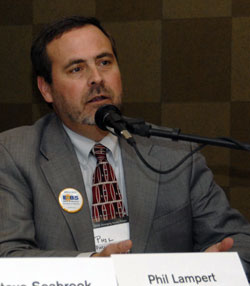 A Nebraska biodiesel plant that was under construction up until the middle of February, just weeks short of its completion, looks like it will be completed.
A Nebraska biodiesel plant that was under construction up until the middle of February, just weeks short of its completion, looks like it will be completed.
The Beatrice Biodiesel Plant will finally be finished after parent company U.S. Canadian Biofuels secured new financing for the plant, according to this article in the Beatrice Daily Sun:
 Bud Cummins, U.S. Canadian Biofuels CEO, said Monday a recent agreement with Home Federal Savings Bank, which issued the construction loan for Beatrice Biodiesel, will allow Beatrice Biodiesel to liquidate certain collateral currently securing the loan to provide a cash pool to complete the core construction at the plant.
Bud Cummins, U.S. Canadian Biofuels CEO, said Monday a recent agreement with Home Federal Savings Bank, which issued the construction loan for Beatrice Biodiesel, will allow Beatrice Biodiesel to liquidate certain collateral currently securing the loan to provide a cash pool to complete the core construction at the plant.
“This is good news for our creditors,” Cummins said. “It is generally believed that most buyers are going to want to see the construction completed before they commit to buying the plant.”
The article goes on to say that U.S. Canadian Biofuels will sell the plant after it is finished to help satisfy liens against it… however, it doesn’t mention how soon it could be actually cranking out biodiesel.


 There could be some new investors taking over the biodiesel operations of an Illinois soybean miller.
There could be some new investors taking over the biodiesel operations of an Illinois soybean miller. Ethanol producer Golden Grain Energy of Mason City, Iowa is looking at getting into the biodiesel business by the end of the year.
Ethanol producer Golden Grain Energy of Mason City, Iowa is looking at getting into the biodiesel business by the end of the year. At the recent Ethanol 2008: Emerging Issues Forum I spoke with Phil Lampert, Executive Director,
At the recent Ethanol 2008: Emerging Issues Forum I spoke with Phil Lampert, Executive Director,  According to recent price reports by Axxis Petroleum and the Oil Price Information Service, ethanol for blending is selling for as much as 10 to 35 cents lower than gasoline, depending on the market. Factoring in the blender’s tax credit, this means that the wholesale cost of E10 is between 6 and 9 cents less per gallon than gasoline.
According to recent price reports by Axxis Petroleum and the Oil Price Information Service, ethanol for blending is selling for as much as 10 to 35 cents lower than gasoline, depending on the market. Factoring in the blender’s tax credit, this means that the wholesale cost of E10 is between 6 and 9 cents less per gallon than gasoline. Lots of information came out of last month’s National Biodiesel Conference and Expo in Orlando, Florida, and trust me, we did all we could to make sure you knew about the events through
Lots of information came out of last month’s National Biodiesel Conference and Expo in Orlando, Florida, and trust me, we did all we could to make sure you knew about the events through  Bill Boone, director of the AgIC, says the focus on bioenergy is not surprising. “Georgia is among the leaders in the bioenergy revolution. In order to stay in the forefront, we must continue to expand our bioenergy research, especially in the areas of alternative feedstocks.”
Bill Boone, director of the AgIC, says the focus on bioenergy is not surprising. “Georgia is among the leaders in the bioenergy revolution. In order to stay in the forefront, we must continue to expand our bioenergy research, especially in the areas of alternative feedstocks.”